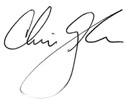Joseph Kvedar, MD, the director of the Center for Connected Health at Partners Healthcare ( connectedhealth.org) recently described a study he published that looked at two home-hub transmission technologies. Patients with diabetes were asked to check their glucose twice a day and upload the results to a database (via the Internet). Some had a device that required them to push a button to accomplish the upload and some had a “passive sensing” wireless device that required no button push.1 The frequency of measurements and data uploads was significantly higher in the wireless group versus the push-button group.
Using smart phones as a data upload/home hub device offers “transformational opportunities,” Dr. Kvedar writes. “We can use them as a device to engage the consumer around health content. We can use them to display health-related information at just the right moment in just the right context. ... We can use them to message you in the moment with contextually relevant, motivating messages.”
Messaging was the topic of the second study, specifically a formal look at the advantages and barriers to e-communications.2
A group at Weill Cornell Medical College in New York City studied 21 primary-care practices that regularly use e-communications with patients for such things as sending test results, receiving requests for medication refills, scheduling appointments and querying physicians. Not surprisingly, the researchers identified three advantages to e-communications: convenience for patients; patient satisfaction; and safe, high-quality care.
However they also identified a substantial disadvantage: the additional work for providers. The volume of electronic messages ranged from a low of five to 10 messages per provider per day to a high of 20 to 50. For some physicians, the work produced “the feeling of never being done,” the authors report.
But the biggest barrier was the still-evolving issue of reimbursement for time spent in such activity. “Despite the fact that we found experiences with electronic communications were, on the whole, very positive in the groups we studied that have embraced this technology, we believe the big stumbling block to its widespread use around the country will be compensation,” the lead author said. “Until different payment models emerge, electronic communication is unlikely to be widely adopted by physician practices.”
 |
1. J Diabetes Sci Technol 2013 May 1;7(3):623-9
2. Health Aff August 2013;32:1361-1367.




